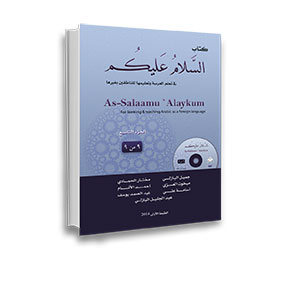After completing this textbook, the learners will be able to:
1. Participate in debates on religion and the state, Arabic prose and poetry, Arabic famous books, mind and intellect, international treaties and charters, Fine arts, theories and doctrines.
2. Define the author’s point of view, and agree or disagree with the author with strong reasoning.
3. Comprehend texts they hear from authentic sources without modifying them.
4. Express orally or in written their opinions on the issues and topics presented through the book, making use of the internet environment to prepare oral and written summaries and presentations .
5. Exercise morphological rules including: plurals from (فِعلة- فُعلة), plurals from (فَعيلة)(فعيل- فُعلاء), plurals from (فاعِل), imperfect nouns = فِعال, plurals from (مَفعل), plurals from (فاعلة) = (فواعِل), plurals from (فَعل) = (فُعول), plurals from (مِفعال، مَفعول) = (مَفاعيل).
6. Comprehend new grammatical rules including: Oath pattern, direct exclamation pattern, condition pattern, praise and dispraise pattern, exception pattern with the particles (إلا- غير –سوى), incitation and warning patterns, elision in Arabic, and verbal assurance.
7. Learning some rhetorical concepts including: types of simile, implicit and explicit metaphor, metonymy, synecdoche, the art of figures of speech(verbal ameliorative), abstract ameliorative,
8. Practice writing for or against an opinion using appropriate connecters, and using supportive and disproving patterns.
9. Writing a short story using figures of speech.
10. Writing definitions of terminologies or life values.
11. Develop the skill of briefing books or historical events.
12. Practicing article analysis into its elements, and recomposing it.
13. Realize cultural aspects related to the topics of the textbook such as: Contemporary Literary Symbols, examples of books written by Muslim inventors and intellectuals, Yemeni legends, Arabic calligraphy, the four doctrine schools in Islam, and the famous Omari document of Jerusalem.
14. Practice new learning strategies such as:
a) reading classic texts from the traditions of prophet Muhammad (peace be upon him), extracts from the Interpretation of Quran, and history, examples of historic stories and novels,
b) watching complete historical documentary films,
c) reading Arabic poetry from different Arab history, and of both patterned poetry and non-patterned poetry, & recording their readings to get feedback and share it with their mates,
d) practicing translation from Arabic into English or their native language and vice versa.

